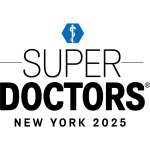

In the realm of dermatology, the journey of treating skin cancers often unfolds in a series of delicate decisions, aiming to balance efficacy, patient comfort, and cosmetic outcomes. For over three decades, I have been privileged to witness the evolution of treatments, but none have been as rewarding and transformative as the fractional laser approach in the case of my patient, RL.
RL, a resilient individual, had battled multiple skin cancers over the years, navigating through surgical excisions and recoveries. However, recent developments in his health, including the onset of Parkinson's disease and confinement to a wheelchair, presented new challenges. As fate would have it, MC was diagnosed with two basal cell carcinomas on his face and a squamous cell carcinoma on his chest, demanding prompt attention.
Traditionally, surgical options, including Mohs surgery, would have been the norm. However, the unique circumstances surrounding RL’s health prompted a reevaluation of the treatment approach. The fractional laser, coupled with a topical medication regimen spanning only five days, emerged as a beacon of hope.
The decision to opt for fractional laser treatment was rooted in its ability to offer numerous advantages over traditional surgical methods. The most striking benefit was the efficiency and convenience it brought to someone like RL, whose mobility challenges made traditional procedures nearly impossible. The fractional laser treatment took a mere 5 minutes per lesion, allowing RL to have all three skin cancers addressed in less than 15 minutes during a single visit.
The implications of this choice extended beyond time and convenience. RL, being on blood thinners, faced potential risks with discontinuation for surgical removal. However, the fractional laser treatment alleviated this concern, demonstrating its safety in such cases. The absence of the need for flap creation, particularly for the lesion below RL’s eye, eliminated the risk of disfigurement, showcasing the cosmetic superiority of this approach.
As a dermatologist and a fellow of esteemed organizations such as the American Academy of Dermatology, The American Society of Dermatologic Surgery, and The American Society of Laser Surgery and Medicine, my commitment to patient care is unwavering. The fractional laser treatment allowed me to uphold this commitment by providing RL with a streamlined, effective, and minimally invasive solution that not only treated his skin cancers but also preserved his quality of life.
Witnessing the relief and jubilation in RL’s eyes after the fractional laser treatment was truly priceless. His gratitude echoed through the office as he exclaimed, "That's it? Wow, this is really great!" It is moments like these that reaffirm why I chose to become a dermatologist – to make a meaningful difference in the lives of my patients, ensuring they not only get better but also stay better. The fractional laser treatment, in MC's case, stands as a testament to the importance of considering innovative approaches that prioritize both medical and emotional well-being, making the triumph over skin cancer a truly rewarding experience.

